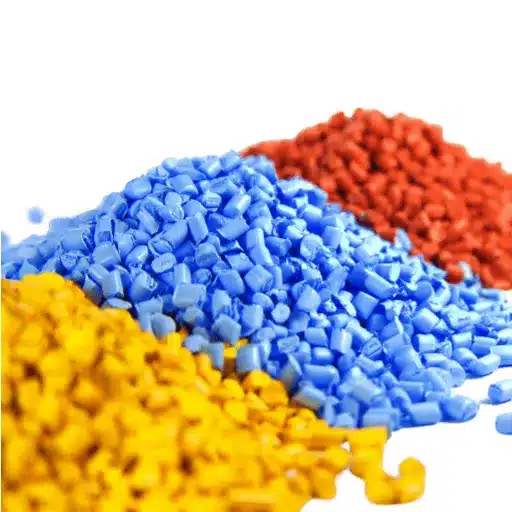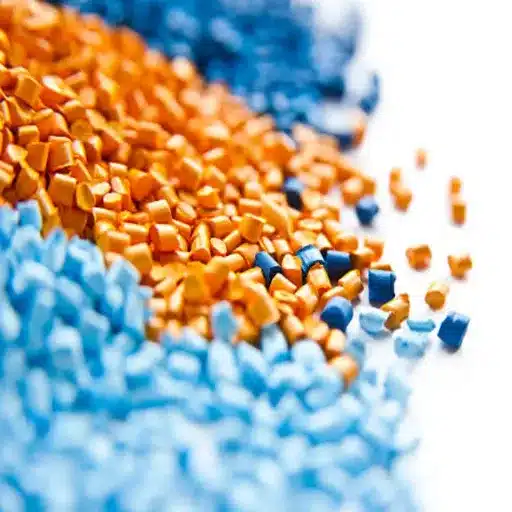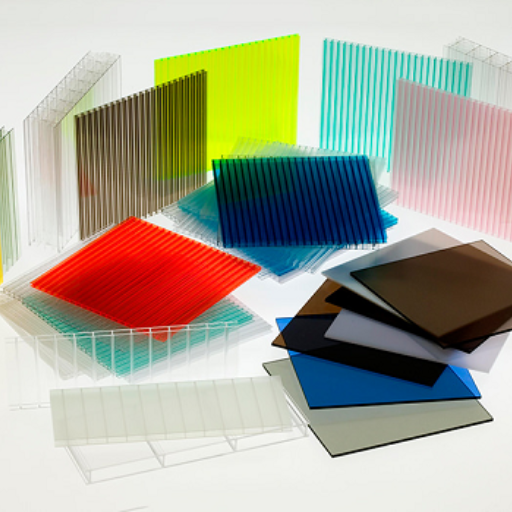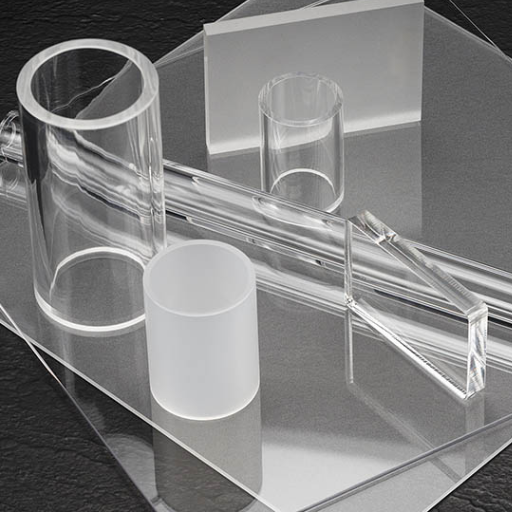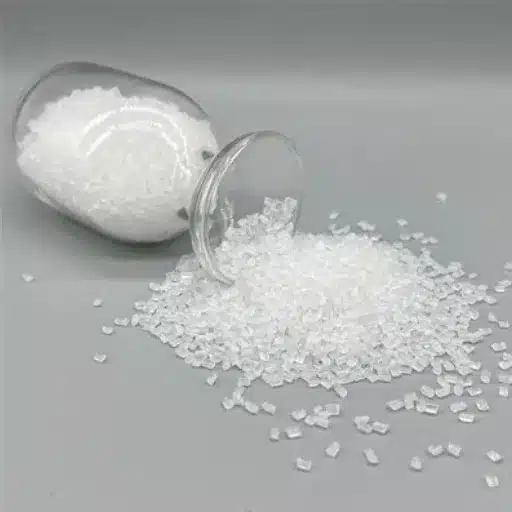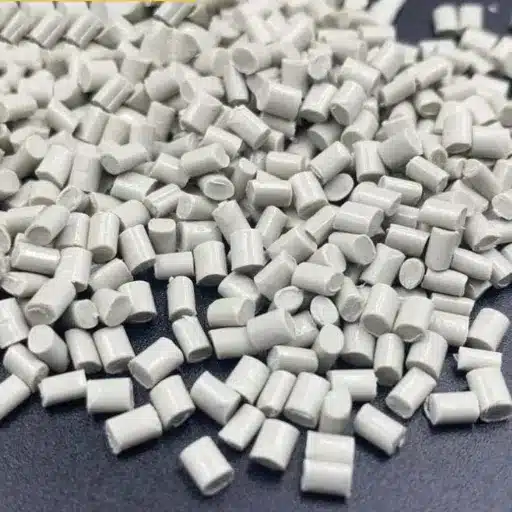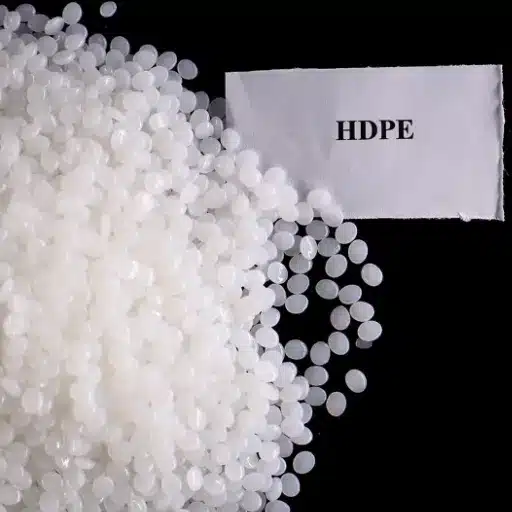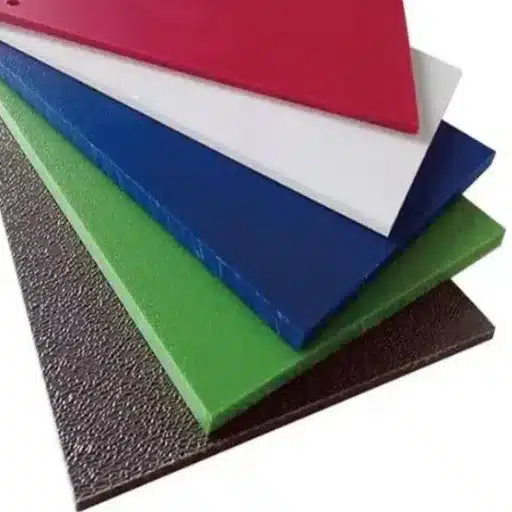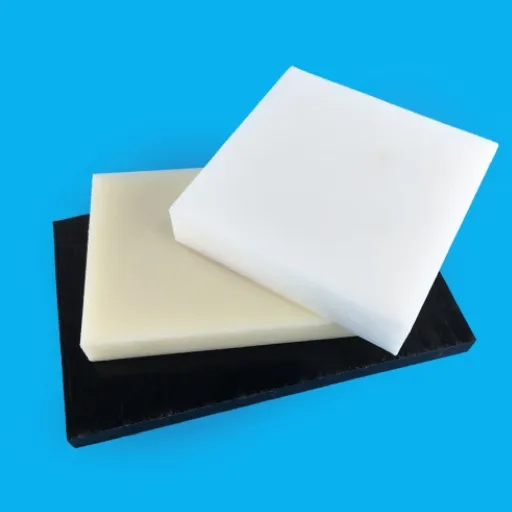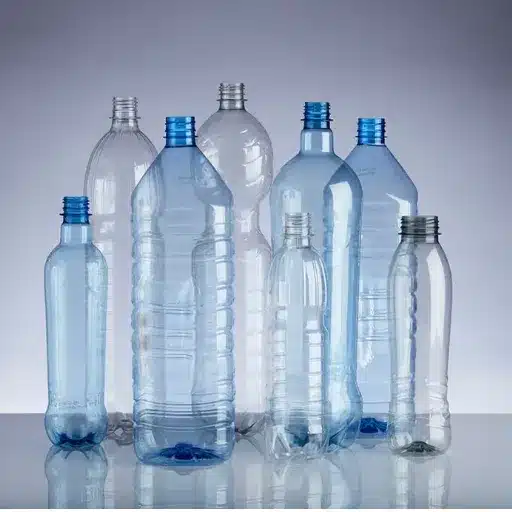High-Density Polyethylene (HDPE) is a very important material for a lot of industries and has a profound influence on the whole process of manufacturing in terms of durability, sustainability, and innovation. The use of HDPE is extensive from super strong piping systems to regular plastic items due to its amazing density and versatility. The question still is, what makes HDPE so special and how does density support its performance and range of applications? This comprehensive guide leads into the exciting realm of HDPE, revealing its distinctive traits, numerous applications, and the part it plays in technology advancement.
What is HDPE?
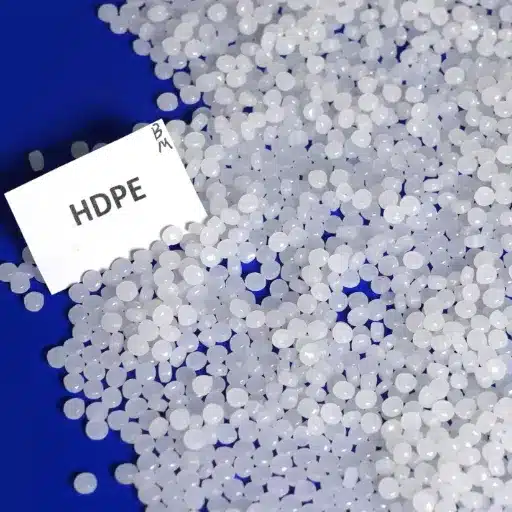
Definition of High-Density Polyethylene
High-Density Polyethylene (HDPE) is thermoplastic that is widely recognized for its very high strength-to-density ratio and versatility. It is composed mainly of long chains of ethylene molecules, and is thus classified as one of the few plastics that have very high durability and resistant to chemicals. Based on data, HDPE is being used in a range of products like plastic bottles, piping, and geomembranes, for instance, mainly because of its very light and very strong properties. Apart from that, its non-toxic and recyclable characteristic makes it an eco-friendly choice. Thus, HDPE helps in recycling and manufacturing solutions that are eco-friendly and less wasteful.
Properties of HDPE
High-Density Polyethylene (HDPE) is famous for its outstanding properties that make it the dominant material in various industries. The most important properties of HDPE are:
- High Strength-to-Density Ratio: Although HDPE is made of light materials, it still has a very high tensile strength which guarantees its use in very demanding applications.
- Chemical Resistance: HDPE is extremely resistant to practically all chemicals e.g. acids, alkalis, and organic solvents thus being an ideal choice for chemical storage containers and industrial pipes.
- Weather Resistance: HDPE is not only excellent but also UV-proof and very durable even under extreme temperatures, hence it has a long life span for outdoor applications.
- Low Moisture Absorption: Its ability to absorb a little water improves its performance in places where moisture is common for example in geomembranes and underwater systems.
- Recyclability: HDPE is totally recyclable since it is made of one component only thus being part of the global sustainability theme and reducing landfill sites.
Industry Insight: Recent data maintains that the demand for HDPE will continue to grow since the industries will make HDPE their priority because of its versatility, efficiency, and compliance with the modern environmental standards.
Comparison with LDPE
Although HDPE (high-density polyethylene) and LDPE (low-density polyethylene) are both polyethylene resins, they still differ greatly in terms of their structure, properties, and areas of application. The molecules of HDPE are mainly arranged in a straight line; hence, it has a higher density and thus more strength and rigidity compared to the branched structure of LDPE. The latter being softer and more pliable.
| Feature | HDPE | LDPE |
|---|---|---|
| Molecular Structure | Straight-line arrangement | Branched structure |
| Physical Properties | Higher strength and rigidity | Softer and more pliable |
| Primary Applications | Pipelines, containers, geomembranes | Plastic bags, wraps, bottles |
| Key Advantage | Toughness and impact resistance | Flexibility and ease of molding |
| Recyclability | More recyclable, less environmental impact | Recyclable, commonly used in single-use packaging |
Data from recent studies reflect gradual and steady growth in the demand for both polymers, mainly due to their use in sustainable packaging and industrial applications. Based on recent search trends and the respective industry reports, it may be stated that LDPE is still the winner in single-use packaging, while HDPE has already entered and is being extensively used in the fields of long-term infrastructure and recyclable container solutions.
Measuring HDPE Density

Methods of Density Measurement
A bunch of dependable techniques exist for density measurement of HDPE that offers material assessment through accuracy and consistency:
Archimedes’ Principle
A classic approach in which the material’s buoyancy force is measured when it is placed in a liquid like water. Density is determined through precise calculations of the weight and displacement.
Density Gradient Column
The density gradient column method utilizes a liquid-filled column with fluids of different densities. The sample for testing is added; then, the location of the sample relates to the density of the fluid at equilibrium. It is a very intricate and effective method for plastic materials.
Pycnometry
A pycnometer is employed to find out the volume of the sample through measurement of the displaced liquid. The density is calculated together with the mass.
Modern Innovation: Technology advancements of the modern day draw attention to the non-invasive optical methods which rely on the light refraction phenomenon to give quick and accurate readings without requiring any physical dislocation of the fluid. These new techniques are slowly but surely taking over due to their efficacy and dependability, especially in the industrial sector where the maximum output is desired.
Factors Affecting HDPE Density
The density of high-density polyethylene (HDPE) which determines its properties and applications is influenced by several important factors:
- Molecular Structure: The degree of branching in polymer chains is critical. Low branching implies a larger proportion of crystalline structure, which supports the notion of high density.
- Production Processes: Temperature and pressure during polymerization significantly impact density variation.
- Additives and Fillers: The amount and nature of additives can influence HDPE density. While modifying properties like UV resistance or color through additive use, slight changes in density may be noticed.
- Environmental Factors: Wear and tear, environmental exposure, and continuous strain are external factors that might cause HDPE density to fluctuate over time, particularly in extreme-condition applications.
Typical Density Values for HDPE
Standard HDPE Density Range
0.93 – 0.97
grams per cubic centimeter (g/cm³)
This range places HDPE among the lightweight materials, yet it is higher than that of Low-Density Polyethylene (LDPE), thus affording it more strength and stiffness. As per the recent statistics, this range of densities may vary slightly based on the specific HDPE grade and the nature and extent of additives or fillers used during production. Most high-end grades of HDPE, such as those used in making pipes or high-impact containers, are likely to have densities averaging at the higher end of the provided range.
Influencing Factors on HDPE Density
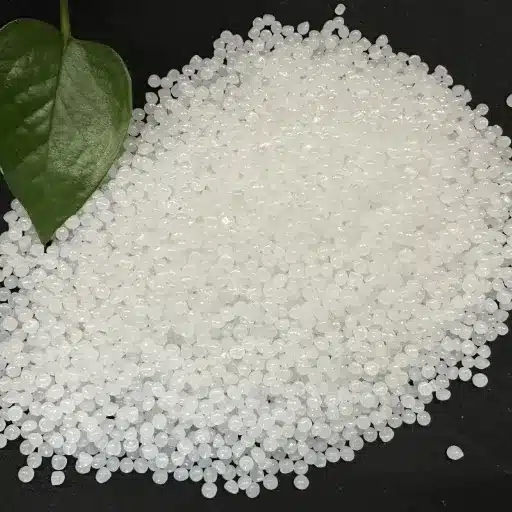
Effects of Temperature
Temperature is one of the main factors that influence the density and properties of High-Density Polyethylene (HDPE).
| Temperature Condition | Effect on HDPE | Applications Impact |
|---|---|---|
| High Temperature | HDPE expands and density decreases slightly due to thermal expansion | Critical for outdoor piping systems and storage containers exposed to extreme temperature variations |
| Low Temperature | HDPE becomes slightly brittle and loses deformation properties | Affects performance where resistance to dynamic or impact forces is important |
Solution: The most recent information asserts that if certain additives are used, it is possible to tailor HDPE formulations so that these temperature-induced effects are less observable, thus securing less variable performance over a much wider range of operating conditions.
Moisture Influence
Moisture content is one of the most critical factors in determining the performance and lifespan of HDPE in various applications. Polymeric material with a high degree of moisture can lose its strength and size stability, especially in places with constant contact with water or humidity.
Modern Solutions to Moisture Challenges:
- Innovations in the HDPE setting include additives coming up with moisture-resistant polymers, which dramatically enhance the ability of HDPE to resist water absorption
- HDPE is guaranteed to keep its mechanical properties and durability even in high humidity or wet conditions
- Active design factors such as sealing and protective coatings can completely develop HDPE’s performance in moisture-sensitive applications
Methods of Processing
One can use different methods of processing for HDPE, each method is designed for a specific application and requirement regarding performance. The main techniques are:
Extrusion
Preferred method for the production of films, sheets, and pipes
Injection Molding
Perfect for creating intricate shapes and parts with high accuracy
Blow Molding
Common method for production of hollow containers and bottles
The information that was recently obtained reveals that the continuous development of processing equipment and methods is a contributing factor in the improvement HDPE manufacturing in terms of efficiency, energy saving, and output quality. These developments coupled with the adaptability of HDPE make it a favorite in industries from packaging to construction.
Applications of HDPE

Use in Food Packaging
High-Density Polyethylene (HDPE) is very important in the packaging of food products because it is a strong, light, and barrier to air and gas. HDPE is extensively used for the packaging of milk, juice, and other perishable liquids to maintain their freshness and safety.
Key Benefits in Food Packaging:
- ✓ Durability against chemicals and moisture protects food from the environment
- ✓ Increases shelf-life and lessens waste
- ✓ Recyclability provides eco-friendly disposal method
- ✓ Compatible with increasing need for sustainable packaging
Impacts in Rotational Molding
High-Density Polyethylene (HDPE) has played a very important role in the rotational molding industry becoming the most desired material because of its versatility and durability. The use of HDPE in rotational molding helps in getting the production of seamless, lightweight and strong products, like water tanks and playground equipment, among others.
Why HDPE Excels in Rotational Molding:
- Extraordinary UV Resistance: Guarantees long performance even with prolonged sunlight exposure, making it appropriate for outdoors
- Low Melting Point: Uniform heat during molding cuts down energy need, increasing production efficiency
- Sustainability: Recyclability matches the rising want for sustainable manufacturing ways
Recent searches for “HDPE rotational molding” and “sustainable rotational molding materials” have increased tremendously indicating interest in green applications. By marrying practicality to sustainability, HDPE is still the one that determines the future of rotational molding with reliable and cutting-edge applications.
Strength and Rigidity in Engineering
The outstanding strength-to-density ratio is the reason why HDPE, or High-Density Polyethylene, finds wide application in the engineering field. This property enables HDPE to bear heavy mechanical loads while being lightweight, which is a key requirement in many industrial processes.
Common Engineering Applications:
- Heavy-duty containers
- Piping systems
- Automotive parts
- Industrial equipment components
The molecular structure creates a perfect blend of stiffness and flexibility, making it a preferred material in applications where strength and reliability are important.
Advantages of Choosing HDPE
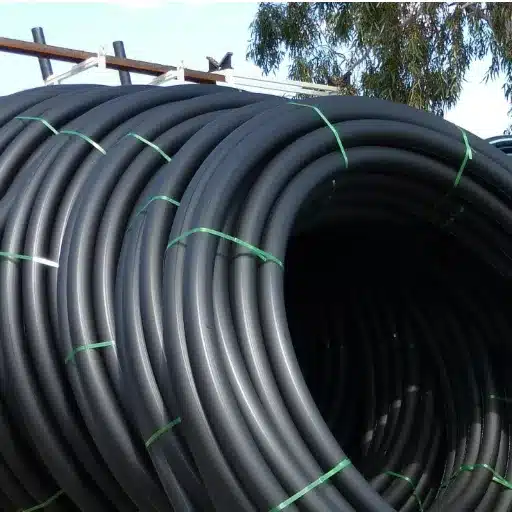
Low Moisture Absorption
HDPE is a plastic that is very low in moisture absorption and therefore its use in applications exposed to water or humid environments is highly recommended. The latest research results revealed that HDPE absorbed less than 0.01% of water even after a long process of exposure.
Benefits: Maintains original form, prevents warping, swelling, or degradation, guarantees long-term performance with little maintenance
High Impact Strength
HDPE has very good impact resistance, which is its major property enabling it to endure the attack of very strong force or pressure without cracking or breaking. Even at the lowest thermometer readings, HDPE is one of the thermoplastics that can bear stress without losing its durability.
Ideal For: Protective equipment, heavy-duty piping systems, automotive parts
Versatility in Molding Processes
The property of HDPE’s versatility goes beyond its physical attributes to also cover a variety of molding techniques leading to its being the material of choice in the manufacturing sector. HDPE can be molded into different shapes via injection molding, blow molding, and rotational molding.
Result: Boosts usefulness and guarantees production is done at a low cost
Frequently Asked Questions (FAQ)
❓ What is the molecular weight of high-density polyethylene?
High-density polyethylene (HDPE) is a plastic whose molecular weight is always in the range of 50,000 to 300,000 g/mol at the very least. HDPE’s power over intermolecular forces and its large tensile strength in comparison to low-density polyethylene (LDPE) is partially attributed to its high molecular weight. The property of being hard and stiff allows HDPE to be used in the manufacturing of food packaging materials and chemical drums. Such properties are characterized by a density which is above 0.941 g/cm³ which is why it is widely used in different industries. Moreover, the Ziegler-Natta method and other such variations in the production process can affect the molecular weight and the resulting traits of the polymer.
❓ How does HDPE compare to LDPE in terms of impact strength?
Impact strength of HDPE is always higher than that of LDPE and this is the main reason why HDPE is more widely used in the manufacture of products that need to be very durable. One of the factors contributing to the impact strength of HDPE is the strong intermolecular forces present in it just like in the case of its overall rigidity and toughness. Flexibility is one of the characteristics that LDPE possesses and thus one of the reasons it is used in making products such as flexible packaging. The tensile strength of HDPE is not only great but also an advantage in a molding process where structural integrity is a must. In conclusion, though the two materials might seem similar, HDPE is the one that being stronger and more resistant to environmental stress cracking gets the most applications in demanding environments.
❓ What types of polyethylene are used in food packaging?
High-density polyethylene (HDPE) and low-density polyethylene (LDPE) are the two types of polyethylenes which are generally used in food packaging:
- HDPE: Preferred mainly because of its excellent chemical resistance and strength properties, used for various containers and bottles
- LDPE: Due to its flexibility, often used for packaging films and wraps
The decision on which polyethylene to use is made mainly based on the required barrier properties and strength. Moreover, it is also possible to generate specific variations with the copolymerization of ethylene that will be more focused on traits related to food-safety. In short, the adaptability of polyethylene is the reason why it is widely utilized in the food packaging industry.
❓ What makes HDPE ideal for rotational molding?
HDPE is very suitable for rotational molding because of its great capacity for forming and processing ease:
- The thermoplastic feature makes it possible for the material to be warmed up and molded into intricate forms without principal strength degradation
- The final product’s high-density feature guarantees good rigidity and impact resistance
- The capability to make big hollow shapes contributes to the usage of this plastic in manufacturing tanks and containers
- The low moisture absorption capacity plays a role in the suitability of this plastic for outdoor applications
So, if one thinks of materials for rotational molding, then HDPE is the one that has the best performance and versatility.
❓ What are the advantages of using HDPE over other polymers?
HDPE gives a number of specific benefits when compared to other polymers like LDPE and polypropylene:
| Advantage | Description |
|---|---|
| Rigidity & Strength | Higher tensile strength ensures permanence and structural integrity |
| Chemical Resistance | Good resistance for packaging and storage of corrosive materials |
| Environmental Durability | Resistant to environmental stress cracking in harsh surroundings |
| Recyclability | Highly recyclable with less environmental impact |
| Moisture Resistance | Very low moisture uptake rate (less than 0.01%) |
In short, HDPE’s extensive range of applications and superior quality make it the most preferred among the leading plastics in modern manufacturing.
Key Takeaways
✓ Material Excellence
HDPE offers an outstanding strength-to-density ratio, making it lightweight yet incredibly durable
✓ Density Range
Typical density values range from 0.93 to 0.97 g/cm³, providing optimal performance characteristics
✓ Versatile Applications
Used extensively in food packaging, rotational molding, engineering, and industrial applications
✓ Sustainability
Fully recyclable with minimal environmental impact, supporting global sustainability initiatives
Conclusion
High-Density Polyethylene (HDPE) stands as one of the most vital materials in modern manufacturing and industrial applications. Its exceptional density range, combined with outstanding physical and chemical properties, makes it an indispensable choice across numerous industries. From food packaging to engineering applications, HDPE continues to demonstrate its versatility, durability, and sustainability.
The material’s ability to maintain structural integrity under varying temperature conditions, resist moisture absorption, and withstand chemical exposure positions it as a superior alternative to many other polymers. Furthermore, HDPE’s complete recyclability aligns perfectly with contemporary environmental standards and the global push toward sustainable manufacturing practices.
As industries continue to evolve and demand materials that balance performance with environmental responsibility, HDPE remains at the forefront of innovation. Whether you’re in manufacturing, construction, packaging, or engineering, understanding HDPE density and its implications can help you make informed decisions that benefit both your operations and the environment. The future of HDPE looks promising, with ongoing technological advancements continually expanding its potential applications and improving its already impressive performance characteristics.
Reference Sources
University of Texas – LDPE vs HDPE
Explains the differences in density between low-density polyethylene (LDPE) and high-density polyethylene (HDPE), including numerical comparisons. Source
University of Memphis – Creep Behavior of HDPE
Investigates the creep behavior and engineering applications of HDPE in industries like piping systems. Source
Eastern Illinois University – Recycled HDPE Properties
Examines the mechanical properties of recycled HDPE reinforced with short glass fibers. Source







